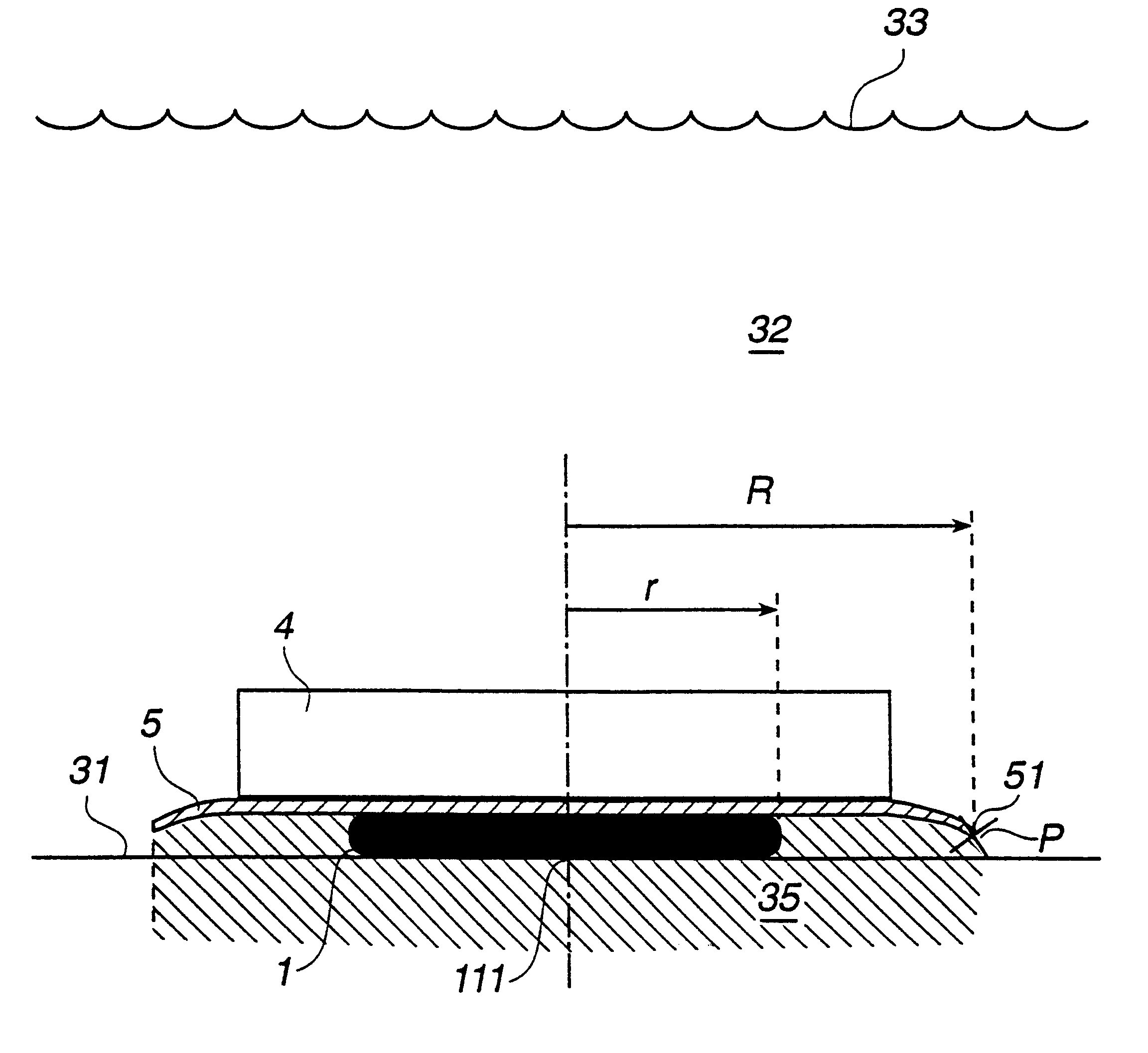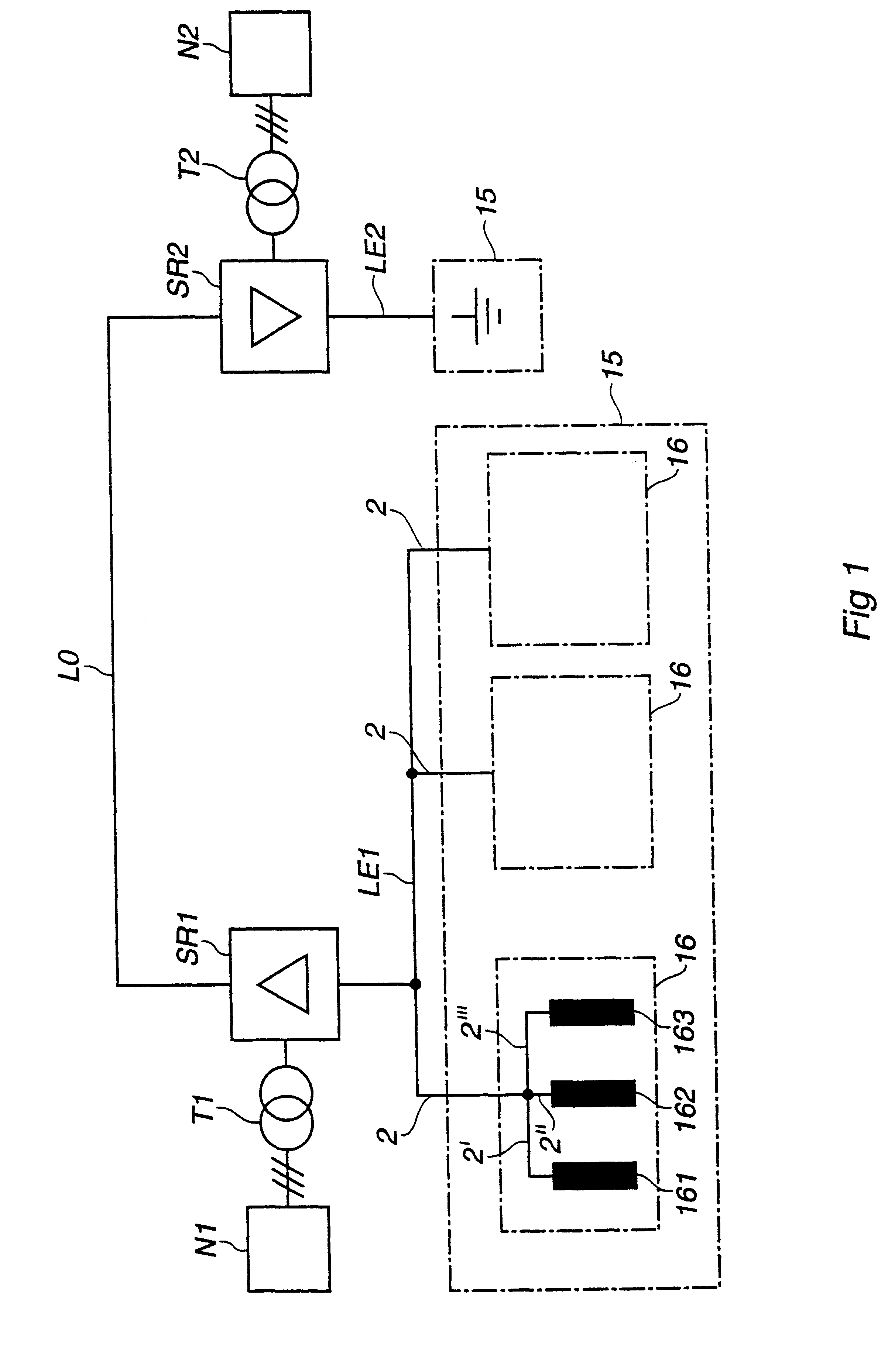Sea electrode for a high voltage direct current transmission system
a high-voltage direct current and electrode technology, which is applied in the direction of insulated conductors, connection contact material, cables, etc., can solve the problems of high local electric field strength in sea water, low average current density, and difficult to provide such electrodes with mechanical protection
- Summary
- Abstract
- Description
- Claims
- Application Information
AI Technical Summary
Problems solved by technology
Method used
Image
Examples
Embodiment Construction
FIG. 5A shows schematically a cross section in a side view of a prior art sea electrode with a mesh-type sub-electrode element 161 as active part, and a ballast 4 in the form of a gravel layer. The sub-electrode element is located at the sea bottom 31, has the length 2L in the plane of the drawing and is fed at its midpoint, as illustrated in FIG. 3C, from a feeder cable 2.
The specific conductivity of the sea water and of the sea bottom are usually several orders of magnitude below the specific conductivity of the material of the electrode body.
It should be noted that the equivalent specific conductivity of a gravel layer above the electrode, although lower than the conductivity of the sea water, is high enough to allow for currents to penetrate the layer and reach the sea water. This is the case also for a massive ballast made of concrete, which becomes electrically conducting after being immersed into sea water for some time. Thus, in a configuration according to FIG. 5A, the elec...
PUM
 Login to View More
Login to View More Abstract
Description
Claims
Application Information
 Login to View More
Login to View More - R&D
- Intellectual Property
- Life Sciences
- Materials
- Tech Scout
- Unparalleled Data Quality
- Higher Quality Content
- 60% Fewer Hallucinations
Browse by: Latest US Patents, China's latest patents, Technical Efficacy Thesaurus, Application Domain, Technology Topic, Popular Technical Reports.
© 2025 PatSnap. All rights reserved.Legal|Privacy policy|Modern Slavery Act Transparency Statement|Sitemap|About US| Contact US: help@patsnap.com



